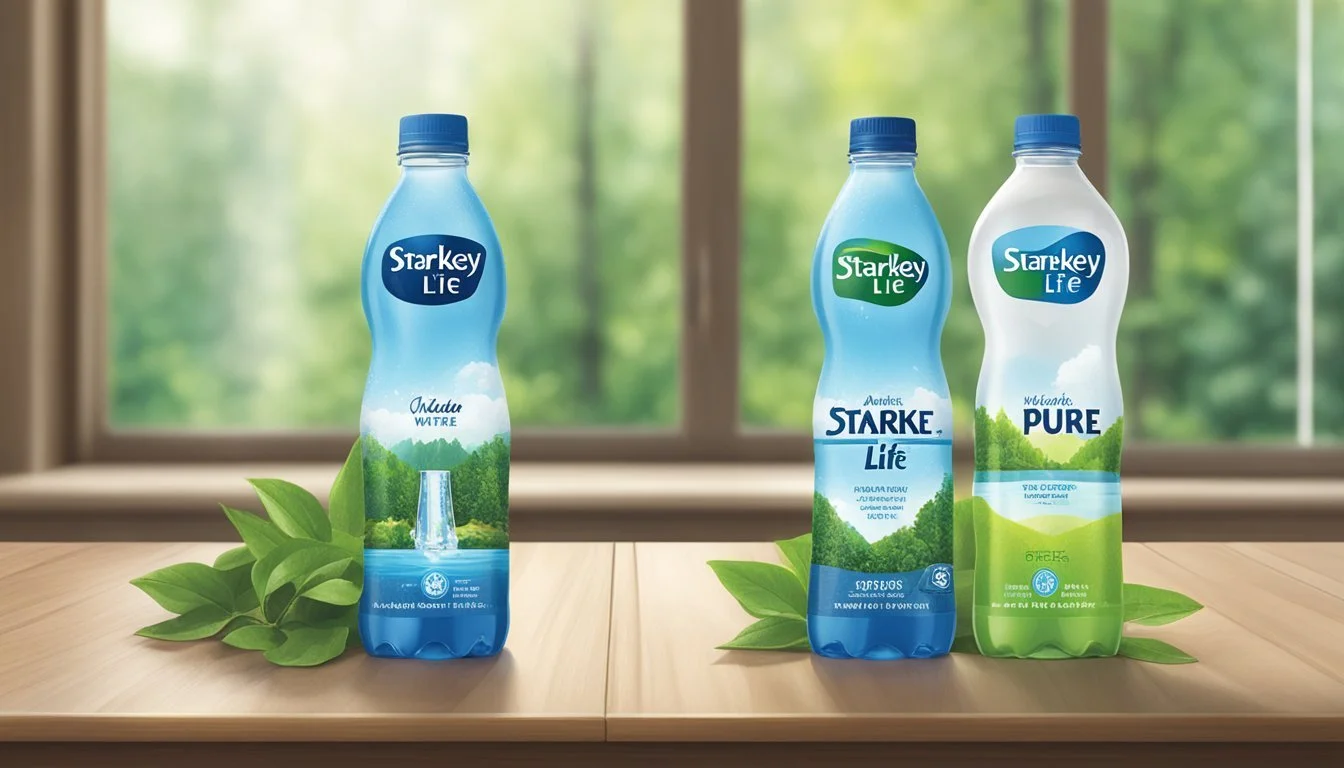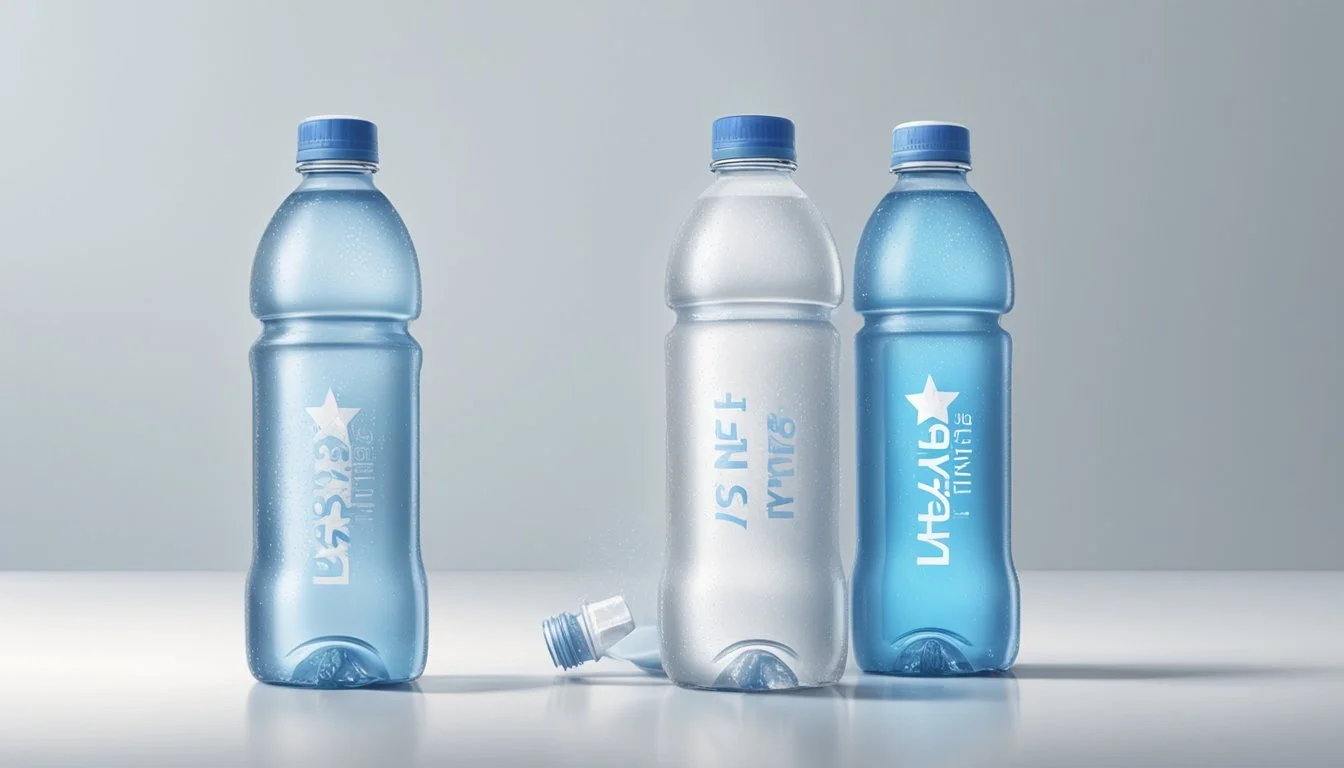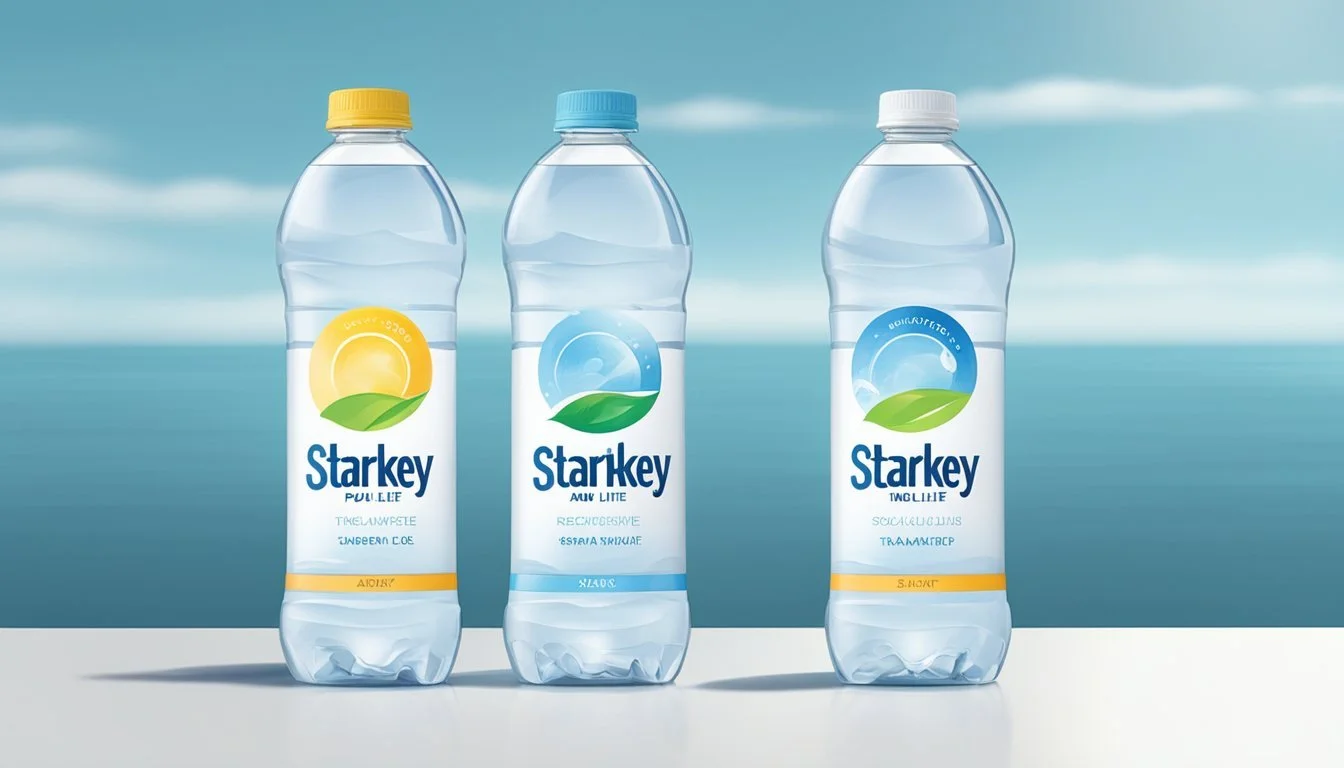Starkey vs. Pure Life
Comparing Their Quality and Taste
When it comes to bottled water, two names often stand out: Starkey and Pure Life. While both brands offer the convenience of portable hydration, Starkey is often praised for its natural spring source and high mineral content, giving it a distinct taste that's appreciated by many. In contrast, Pure Life sources its water from city supplies and well water, leading some to question its purity and taste.
Starkey markets itself as a premium brand with water that boasts natural alkalinity and a crisp, clean flavor. On the other hand, Pure Life is more widely available and budget-friendly, making it a common choice for everyday hydration needs. This affordability might come at the cost of taste and source quality, but it doesn't deter its significant consumer base.
Ultimately, the choice between Starkey and Pure Life comes down to personal preference and priorities. If taste and sourcing are top concerns, Starkey may be the better option. For those who prioritize availability and affordability, Pure Life offers a practical solution.
The Essence of Bottled Water
Bottled water comes in various forms, each distinguishing itself by origin, treatment process, and content. Key considerations include source purity, mineral content, and pH balance, all of which impact taste and perceived health benefits.
Defining Bottled Water
Bottled water refers primarily to water packaged in plastic or glass for human consumption. It can come from sources like springs, wells, and public water systems.
Key categories include:
Spring Water: Sourced from natural springs, retaining natural minerals.
Purified Water: Undergoes treatment processes like distillation or reverse osmosis to remove impurities.
Mineral Water: Has specific mineral content sourced from geologically protected underground reservoirs.
Each type meets strict regulatory standards to ensure safety and quality.
Types of Bottled Water
Spring Water:
Originates from underground formations and naturally flows to the surface. Containing naturally occurring minerals, it offers a distinct taste. Examples include brands like Zephyrhills. Regulations ensure it’s collected at the spring or via a borehole tapping the underground source.
Purified Water:
This type undergoes rigorous treatment processes like distillation, deionization, or reverse osmosis. The purification removes contaminants, making it highly purified. Products like Nestlé Pure Life fall in this category, often enhanced with added minerals for taste.
Mineral Water:
Must contain a consistent level of minerals from its source. The FDA regulates that these minerals must remain constant within certain limits. Mineral waters are prized for their health benefits and unique flavors, such as those found in European brands.
Understanding Starkey and Pure Life
This section explores two prominent bottled water brands: Starkey and Pure Life, examining their brand background, water sources, and quality attributes.
Starkey: Brand Overview
Starkey is known for its premium artesian water sourced from a deep geothermal well in Idaho. The water is naturally filtered through lava rock and gets bottled at its source.
Starkey's water boasts a high mineral content, offering a unique taste profile. It contains natural minerals like silica and bicarbonate, which contribute to its slightly alkaline pH. The water is free from artificial additives and undergoes minimal processing, maintaining its natural purity and composition. Starkey's emphasis on source integrity and natural filtration highlights its premium positioning in the bottled water market.
Pure Life: Brand Overview
Nestlé Pure Life is a globally recognized brand that offers purified water sourced from multiple locations. The water undergoes a multi-step purification process, including filtration and reverse osmosis, to ensure safety and cleanliness.
Pure Life contains added minerals to enhance taste. Commonly available in various bottle sizes, it aims to provide affordable hydration options. However, concerns have been raised about the brand's water sources and the presence of artificial additives. Despite these issues, Pure Life remains popular for its wide availability and consistent quality. Nestlé's reputation as a major player in the water industry also supports the brand's extensive reach and consumer trust.
Water Quality and Purity
Starkey and Pure Life bottled water brands each maintain distinct standards and processes to ensure water quality and purity. Key areas of consideration include purity standards and the contaminants eliminated through filtration processes.
Purity Standards
Starkey adheres to rigorous standards to ensure the highest quality. It often sources its water from natural springs, focusing on maintaining the water's natural minerals while ensuring purity.
Pure Life, owned by Nestlé, follows comprehensive guidelines and typically undergoes extensive purification methods. As one of their more prominent brands, Pure Life ensures that every bottle meets their quality benchmarks, often employing methods such as reverse osmosis.
Adherence to these standards helps both brands gain consumer trust, supported by regular inspections and quality checks. Purity is safeguarded from source to bottle, emphasizing safe consumption.
Contaminants and Filtration Process
Starkey's filtration process is designed to eliminate potential contaminants like lead, heavy metals, and arsenic. Starkey water undergoes multiple layers of filtration, including sediment filtering and carbon filtering, to remove toxins while retaining essential minerals.
Pure Life uses advanced techniques such as reverse osmosis and distillation to ensure water purity. This process helps in removing a broad spectrum of contaminants, including PFAS chemicals and other harmful substances. Additionally, bisphenol A (BPA) is avoided by using BPA-free bottles, minimizing risks associated with plastic toxins.
Both brands highlight their commitment to eliminating contaminants to provide clean and safe hydration choices. Their extensive filtration systems are tailored to meet and exceed health standards.
Sourcing and Origin
The origin of bottled water can significantly impact its quality and taste, stemming from whether it comes from natural springs or municipal sources. Both Starkey and Pure Life have distinct sourcing and purification methods that define their products.
Natural Springs and Underground Sources
Starkey sources its water from a natural spring located in the mountains of Idaho. This spring water is naturally alkaline, which can appeal to consumers looking for specific water qualities. Natural spring water often contains minerals picked up as it flows through underground rock formations, adding to its flavor profile.
Pure Life, in contrast, does not promote itself as exclusively sourcing from natural springs. While the brand may use some spring sources, its primary focus is on maintaining consistent quality through extensive purification processes rather than the origin.
Municipal Sources and Purification Techniques
Pure Life relies heavily on municipal sources for its water. After collecting the municipal water, Pure Life employs a rigorous multi-step purification process. This includes techniques like reverse osmosis and ultraviolet light treatment to ensure the water is free from contaminants.
Starkey, on the other hand, focuses less on municipal sources and more on the natural purity of its spring. Although it may still implement purification processes, the emphasis is on preserving the water's natural state rather than extensive treatment.
In summary, Starkey emphasizes the natural purity and mineral content of its spring water, while Pure Life ensures consistency and safety through trusted purification techniques.
Taste Profile and Composition
Both Starkey and Pure Life bottled waters present distinct taste experiences due to their differing mineral content and pH levels. Understanding these factors can help consumers make an informed choice based on their personal preferences.
Mineral Content and Its Effect on Taste
Minerals contribute significantly to the taste of bottled water. Pure Life water is sourced from municipal supplies and then undergoes rigorous purification processes, resulting in a clean, neutral taste. This process strips most minerals, making it suitable for those who prefer water with minimal aftertaste.
Starkey water, sourced from geothermal springs, contains a unique mineral blend. It has higher levels of silica and trace minerals, which give it a slightly sweet, smooth taste. Electrolytes naturally present in Starkey can enhance refreshment and taste complexity, appealing to those who enjoy a more pronounced flavor in their water.
The Impact of pH Levels on Water Taste
pH levels also play a crucial role in the taste profile of bottled water. Pure Life typically has a balanced pH of around 7, which contributes to its neutral and clean taste, complementing its low mineral content. This makes it a versatile choice for various consumers, including those who might pair it with food or beverages.
Starkey water, with a pH of around 8.8, is more alkaline. This higher pH level can give the water a softer, silkier taste, which some consumers find more pleasant. The alkalinity may also neutralize acidity in the mouth, providing a different sensation compared to more acidic water brands.
In summary, the distinct tastes of Starkey and Pure Life are shaped by their unique mineral compositions and pH levels, offering options for different palate preferences.
Health and Hydration
Understanding the health benefits of bottled water and its role in maintaining proper hydration is essential. The two most important aspects to focus on are the role of electrolytes in hydration and expert opinions on water and health.
The Role of Electrolytes in Hydration
Electrolytes such as sodium, potassium, and magnesium play a critical part in maintaining the body's hydration levels. These minerals help regulate fluid balance, muscle function, and nerve signaling. Starkey water often includes naturally-occurring electrolytes sourced from deep wells, making it effective for hydration.
Pure Life water, processed for purity, may lack some of these naturally-occurring electrolytes. While the absence doesn’t make it unhealthy, it might not be as efficient for rehydration compared to water with added or naturally-present electrolytes. Consumers should consider their hydration needs, especially after intense physical activity, where electrolyte replenishment is crucial.
Water and Health: What Experts Say
Health experts widely agree that hydration is key to maintaining overall well-being. Adequate water intake supports digestion, nutrient absorption, and temperature regulation. Starkey’s natural mineral content is often highlighted by experts for its potential health benefits, including better hydration levels.
Pure Life bottles its water through rigorous purification processes to eliminate contaminants, ensuring a safe drinking option. Expert opinions differ on the necessity of added electrolytes for daily hydration. Some argue that a varied diet provides sufficient electrolytes, making Pure Life an acceptable choice for everyday consumption.
In sum, both brands offer significant health advantages, yet their differing compositions may better serve individual hydration and health needs based on lifestyle and dietary factors.
Packaging and Environmental Impact
Starkey and Nestlé Pure Life have different approaches to packaging and sustainability. These differences impact their environmental footprints significantly.
Bottles: Materials and Environmental Considerations
Starkey's bottled water is known for using glass bottles in addition to plastic. Glass is often seen as a more sustainable material due to its recyclability and lower impact on plastic waste. However, glass production and transport can be energy-intensive.
Nestlé Pure Life, on the other hand, predominantly uses plastic bottles. These are typically made of PET (polyethylene terephthalate), which is also recyclable, though plastic waste remains a serious environmental concern. The production of these plastic bottles also consumes considerable resources like oil and energy, contributing to pollution if not managed properly.
Sustainability Efforts by Brands
Starkey has committed to reducing its carbon footprint through various initiatives. Their use of glass bottles is part of a broader effort to lessen the environmental impact. Furthermore, the company employs efficient production methods to minimize waste.
Nestlé Pure Life focuses on improving the recyclability of its packaging. They have initiated campaigns to encourage recycling among consumers and invested in the development of biodegradable bottles. Additionally, Nestlé has set goals to increase the use of recycled PET in their bottles, aiming to create a closed-loop system for their packaging.
Both brands demonstrate efforts towards sustainability, though through different methods—Starkey through material choices and production efficiency, and Nestlé Pure Life through recycling initiatives and innovative packaging.
Comparing Costs and Value
When choosing between Starkey and Pure Life bottled waters, it's essential to consider both affordability and value. Factors like premium pricing and the cost of convenience play significant roles in determining which brand offers the best investment.
Affordability vs. Premium Pricing
Starkey is often marketed as a premium brand, reflected in its higher price point. Consumers might find Starkey bottled water in high-end grocery stores and specialty shops. This premium pricing is due to its sourcing from a geothermal spring, which promises unique mineral content and taste.
On the other hand, Pure Life serves as a more affordable option. It's widely available in major grocery stores, making it accessible for everyday use. Pure Life’s pricing strategy focuses on providing budget-friendly hydration without emphasizing exclusive sources or unique mineral content.
The True Cost of Convenience
Convenience matters for those constantly on the go. Starkey tends to be less readily available, often found in select stores or through online retailers with possible shipping costs. This can add to the overall expense and reduce convenience.
In contrast, Pure Life excels in convenience. Positioned in nearly every grocery store and many convenience stores, it’s easily accessible. The widespread availability helps keep costs low and ensures it remains a go-to option for many consumers.
The convenience combined with affordability makes Pure Life a practical choice for those seeking reliable hydration without a premium price tag.
Consumer Preferences and Choices
Consumers often base their choices on flavor, carbonation options, and market trends. The following subtopics highlight essential considerations for anyone choosing between Starkey and Pure Life bottled waters.
Flavor Variations and Carbonation Options
Starkey and Pure Life offer distinct flavor profiles which influence consumer preferences. Starkey offers a smooth, natural taste that appeals to those who enjoy a more pure drinking experience. Some describe its taste as “clean” and slightly alkaline due to its sourcing from geothermal springs.
Pure Life, produced by Nestlé, generally provides a more neutral taste. It’s popular among those who prefer a no-frills option that is consistently refreshing. While Starkey offers natural variants, Pure Life also includes flavored and carbonated options.
Customers can choose sparkling water for an added fizz, making it a versatile choice for different occasions. Overall, these differences in flavor and carbonation options cater to varied taste preferences.
Market Trends and Popularity
Market trends reveal key insights into the popularity of Starkey and Pure Life. Starkey, known for its premium positioning, attracts consumers interested in high-quality, naturally-sourced water. Its bottled water appeals to eco-conscious buyers looking for sustainable options and those intrigued by its unique geothermal origins.
Pure Life, due to its widespread availability and affordable pricing, enjoys a broader market reach. It is often found in supermarkets and wholesale clubs, making it accessible for everyday use. Price-sensitive customers appreciate the value offered by Pure Life, which balances cost and quality.
Both brands reflect consumer demand for diverse bottled water choices, from cost-effective daily hydration to premium, natural spring sources. This range ensures they each retain a significant consumer base in the bottled water market.
More About Starkey
Icelandic Glacial vs Starkey: Which Bottled Water is Better?
Mountain Valley Spring Water vs Starkey: Which Bottled Water is Better?
Starkey vs Kirkland Signature: Which Bottled Water is Better?
Starkey vs Richard's Rainwater: Which Bottled Water is Better?
Starkey vs Whole Foods Italian Still Mineral water: Which Bottled Water is Better?
More About Pure Life
Cascade Mountain vs Pure Life: Which Bottled Water is Better?
Hawaii Volcanic vs Pure Life: Which Bottled Water is Better?
Hawaiian Springs vs Pure Life: Which Bottled Water is Better?
Icelandic Glacial vs Pure Life: Which Bottled Water is Better?
Nestle Pure Life vs Pure Life: Which Bottled Water is Better?
Pure Life vs Kirkland Signature: Which Bottled Water is Better?
Pure Life vs Whole Foods 365: Which Bottled Water is Better?
Richard's Rainwater vs Pure Life: Which Bottled Water is Better?
Solan de Cabras vs Pure Life: Which Bottled Water is Better?
Talking Rain AQA vs Pure Life: Which Bottled Water is Better?
Whole Foods Italian Still Mineral water vs Pure Life: Which Bottled Water is Better?








